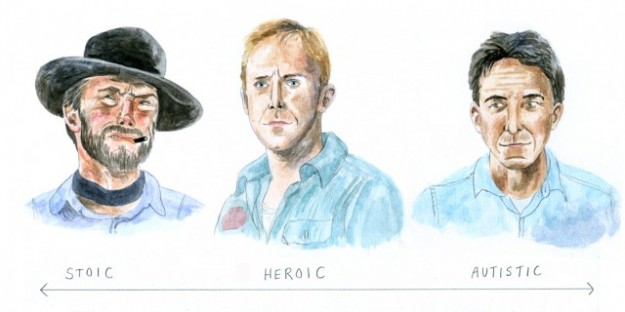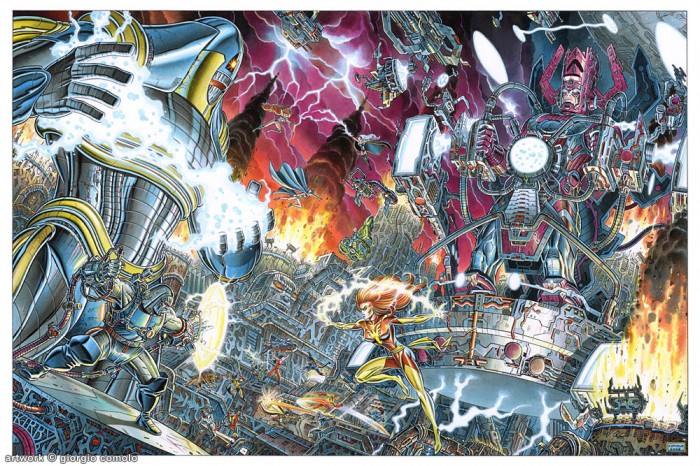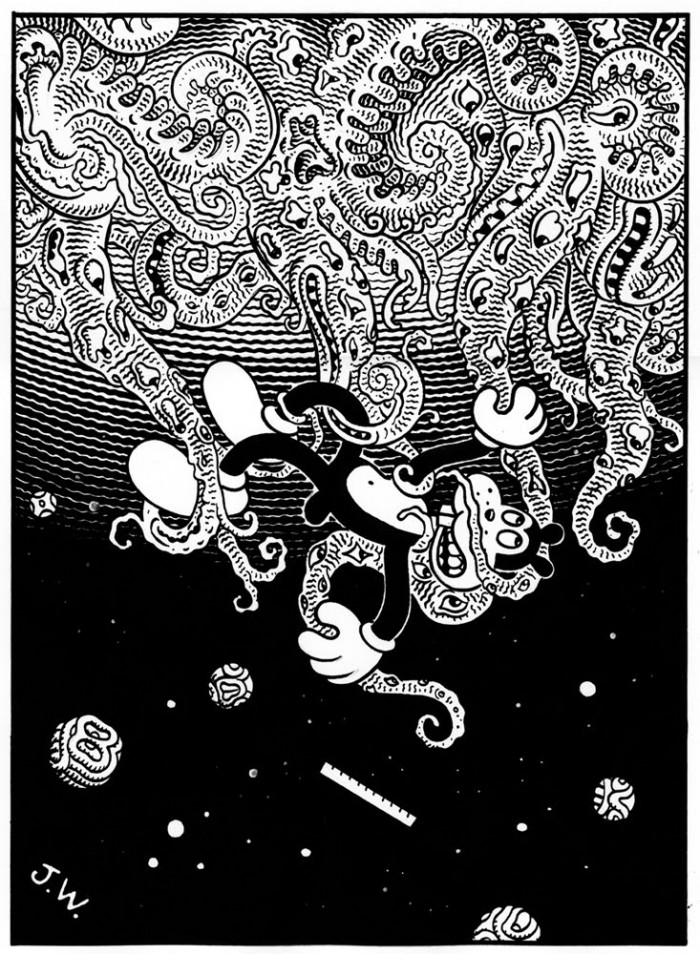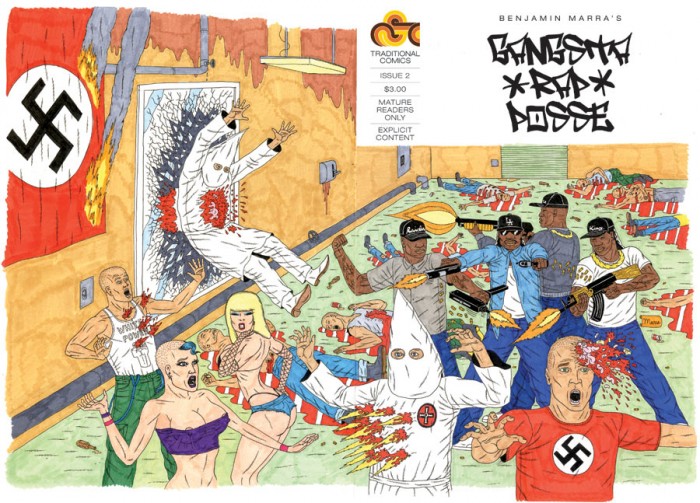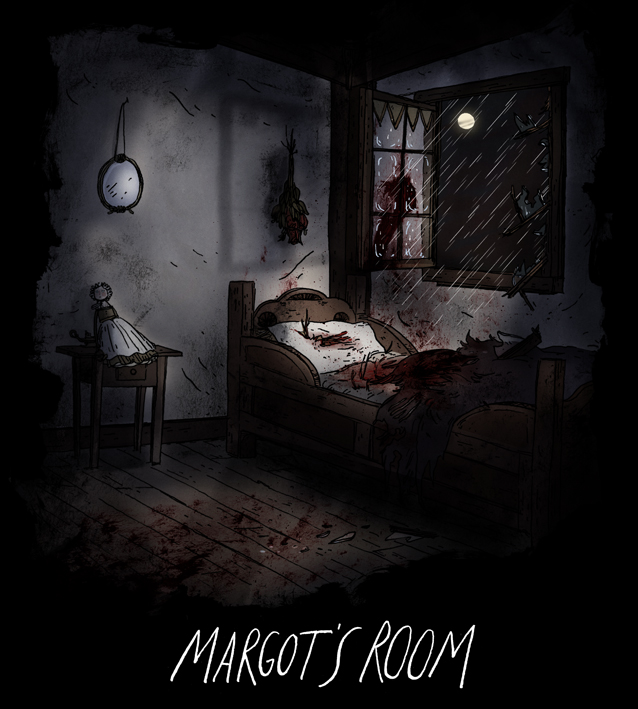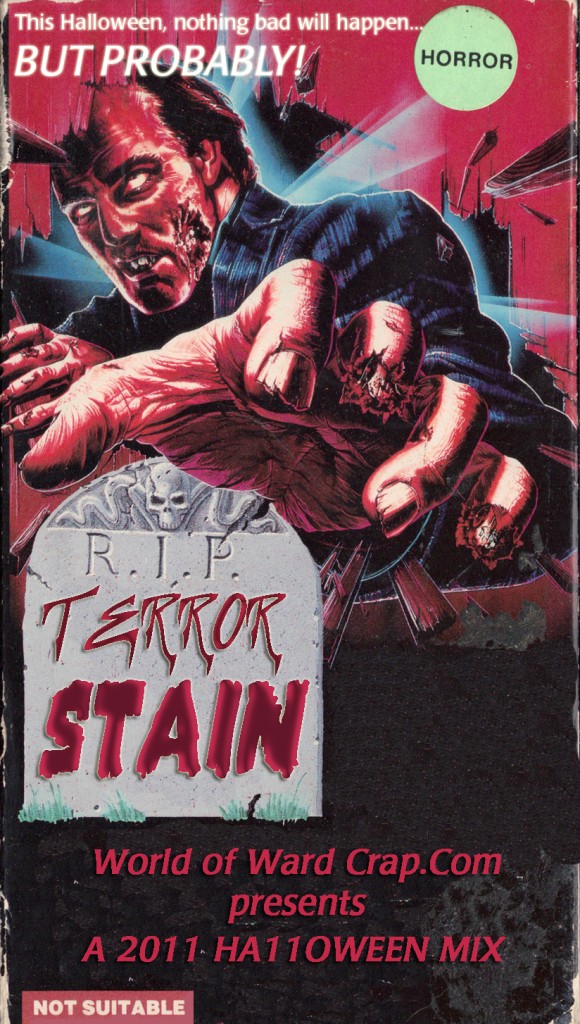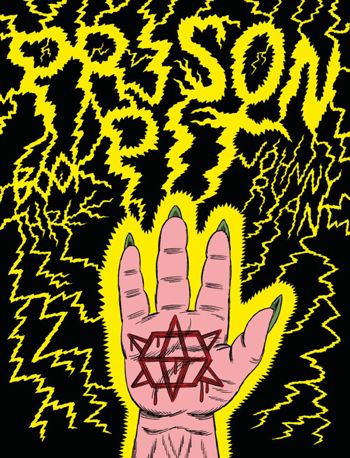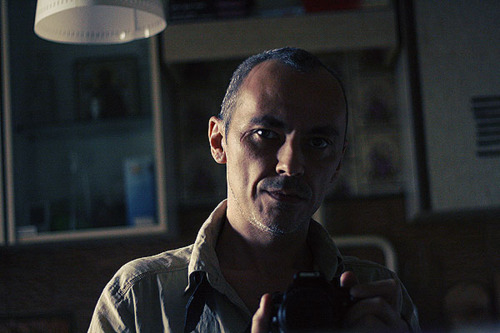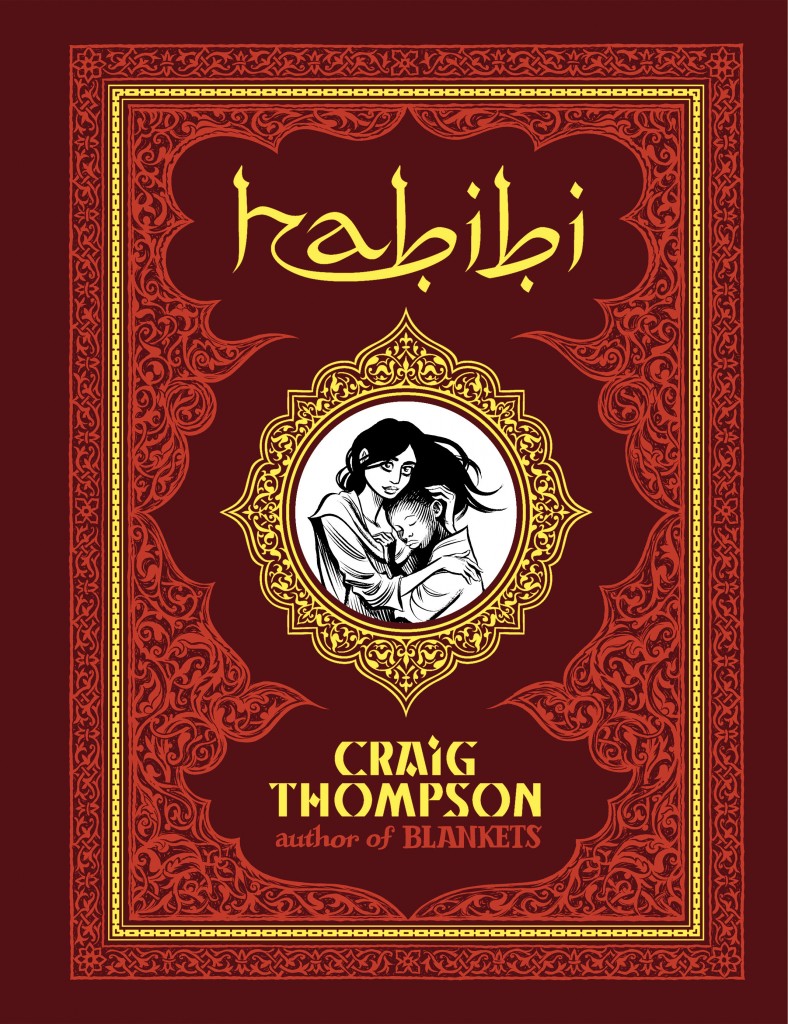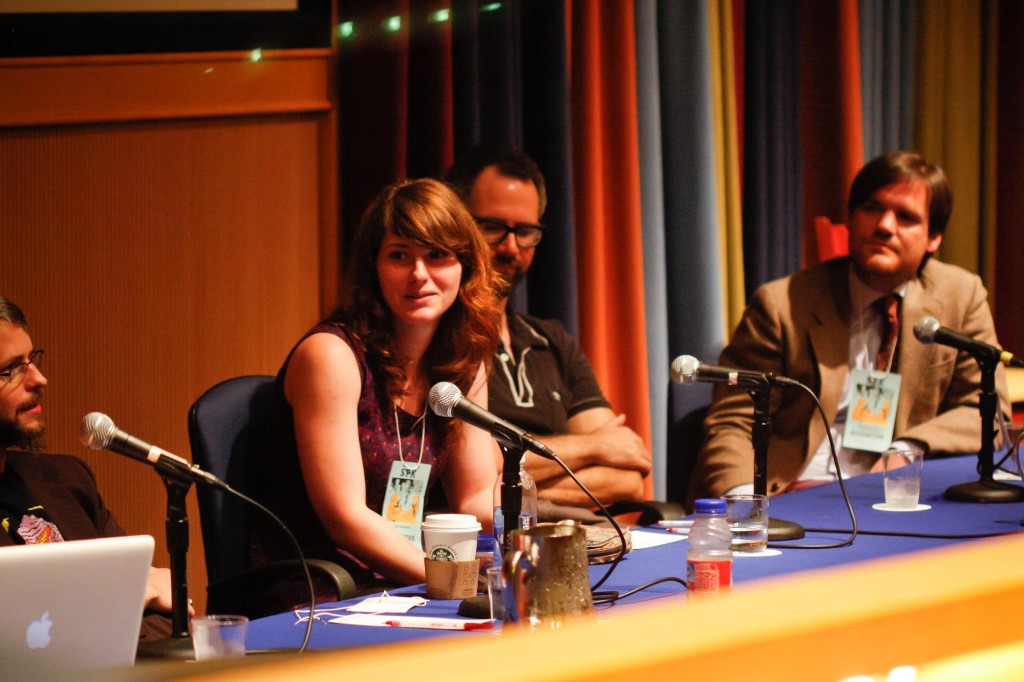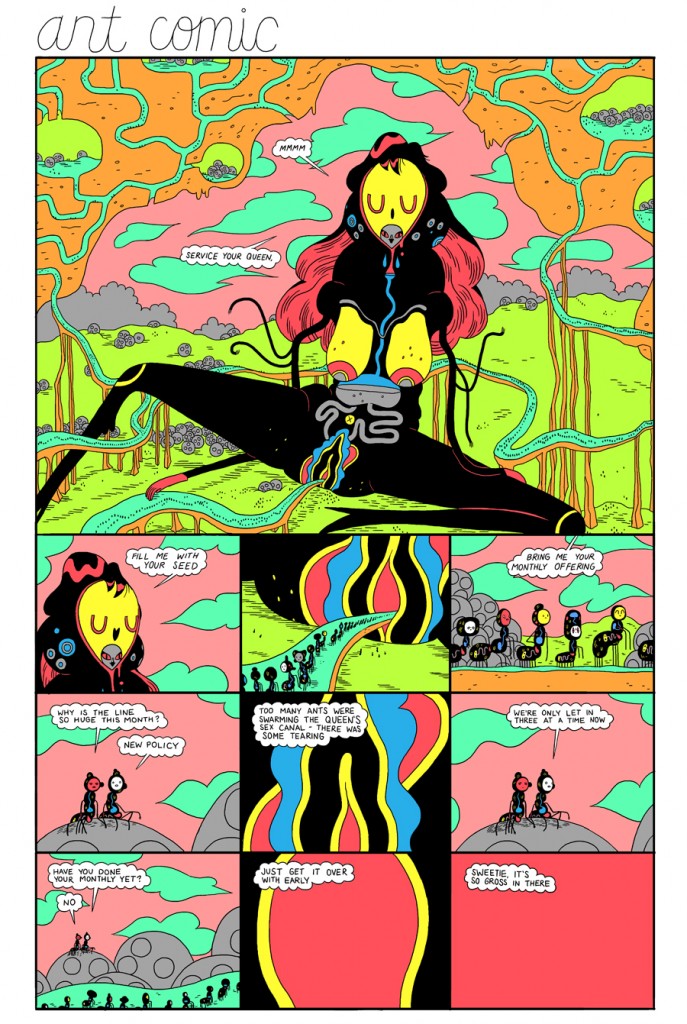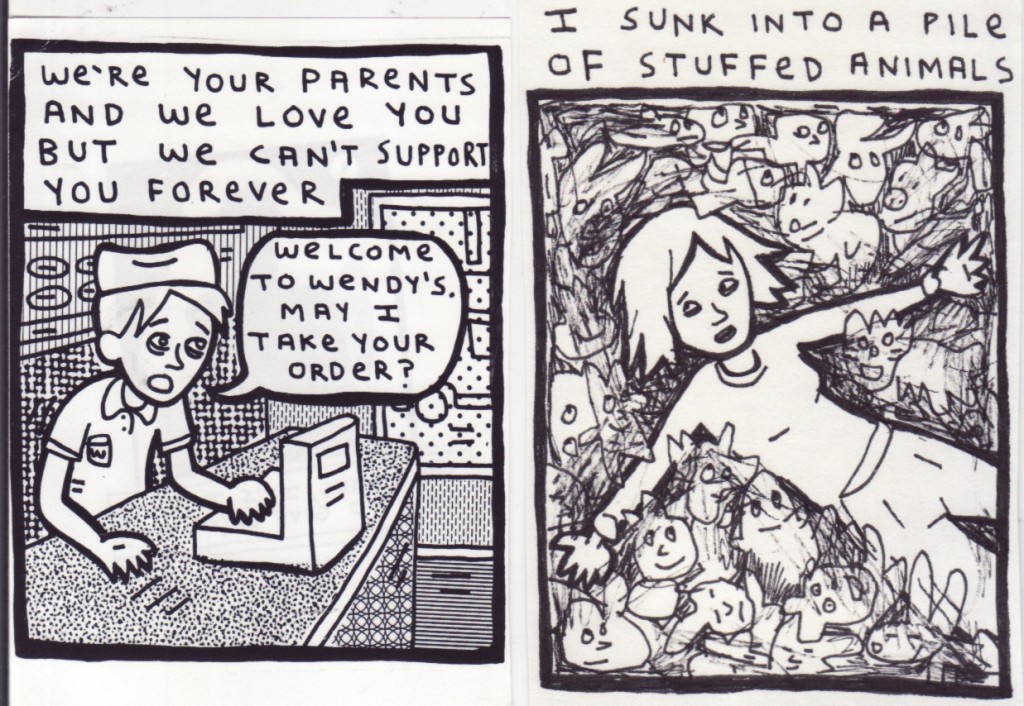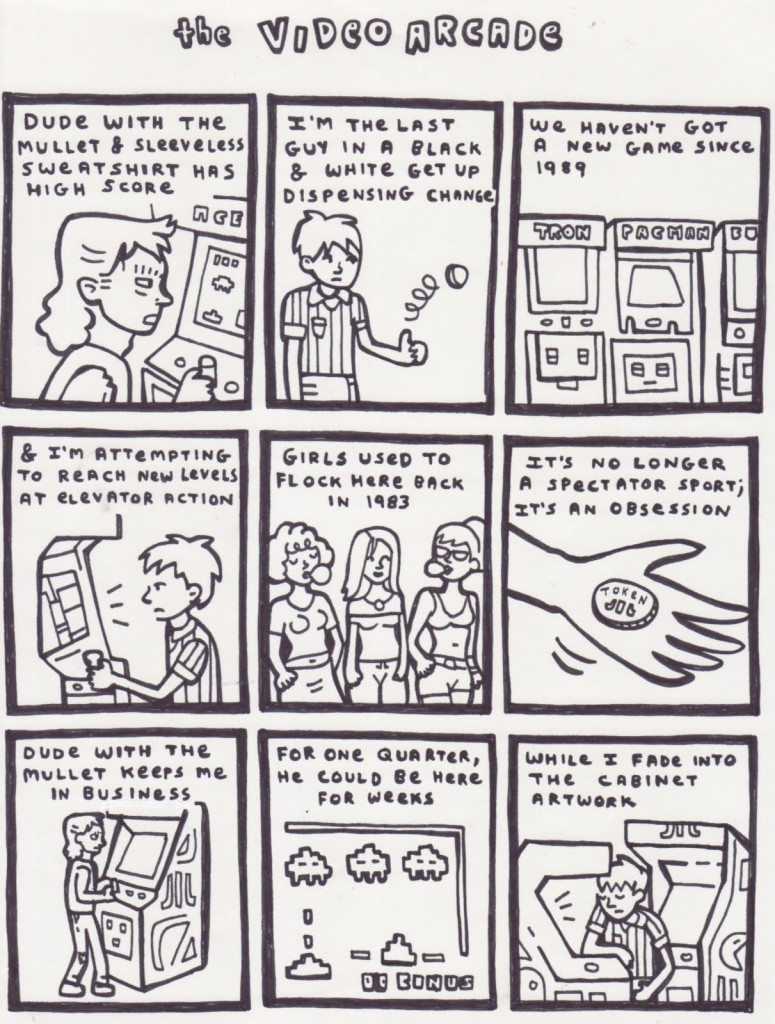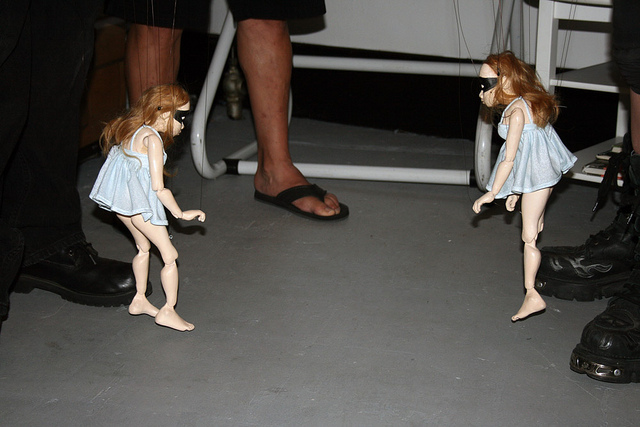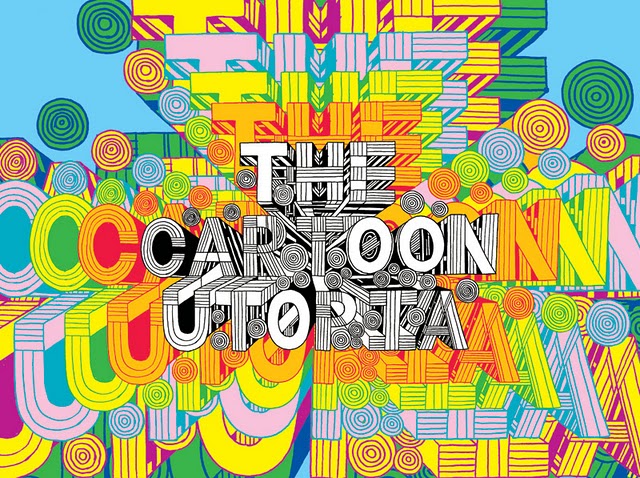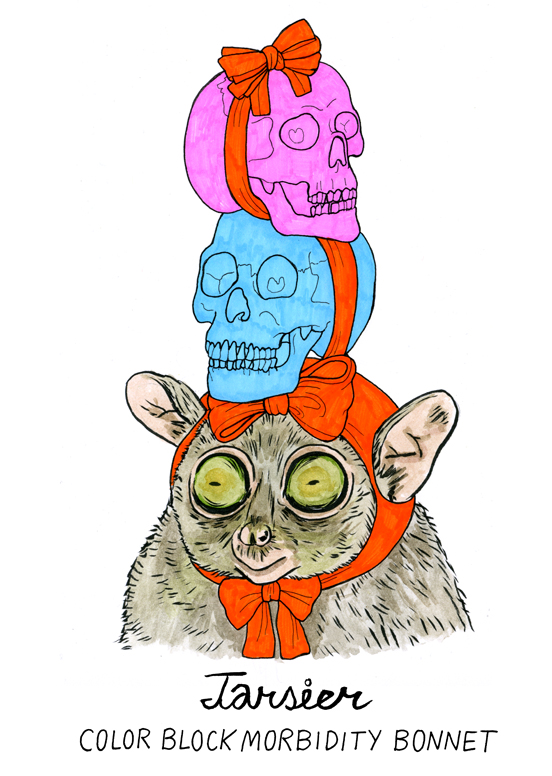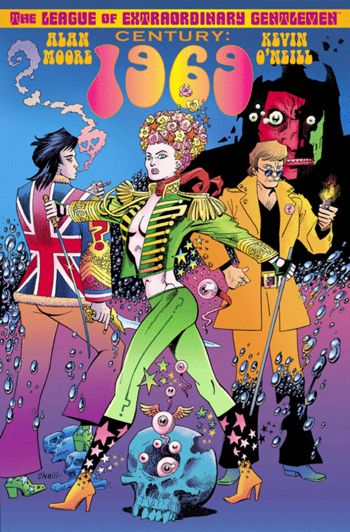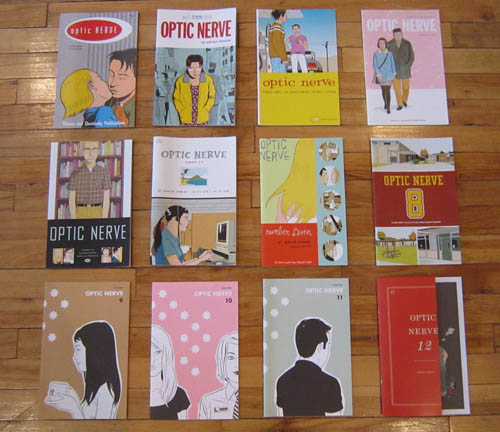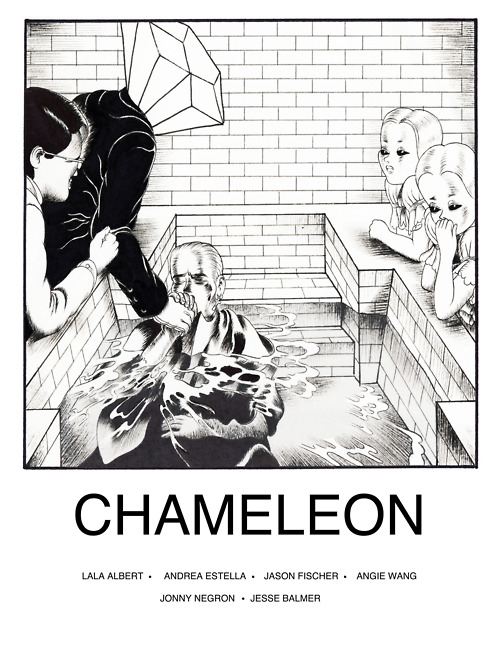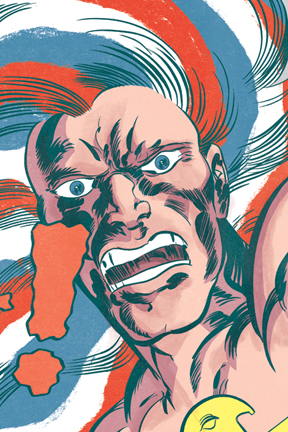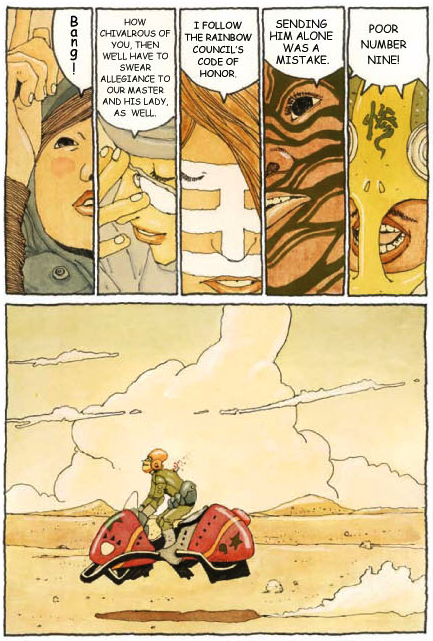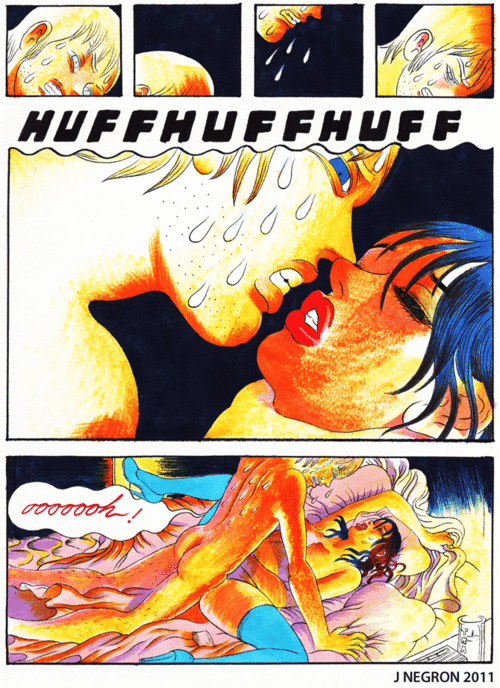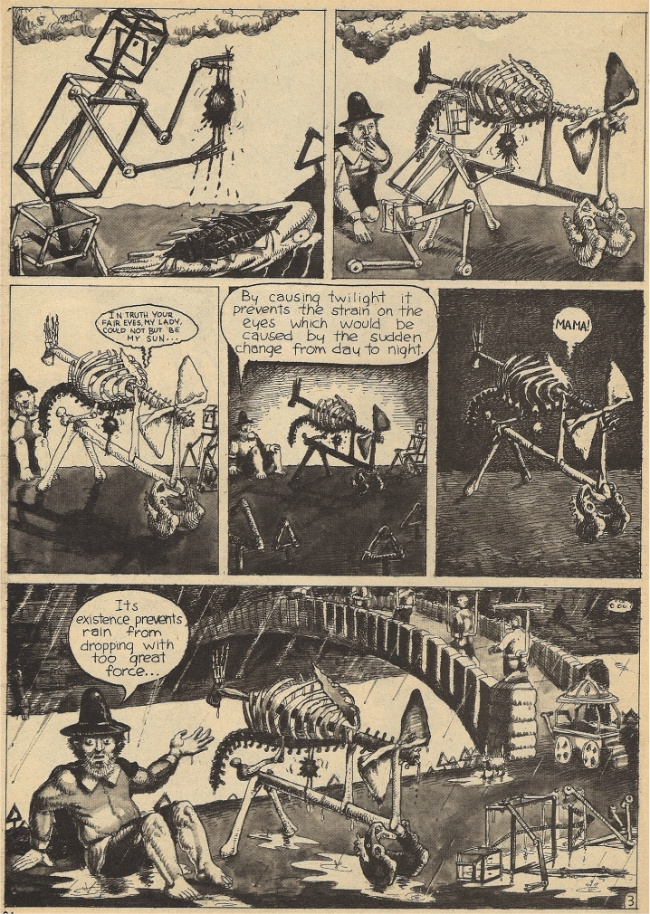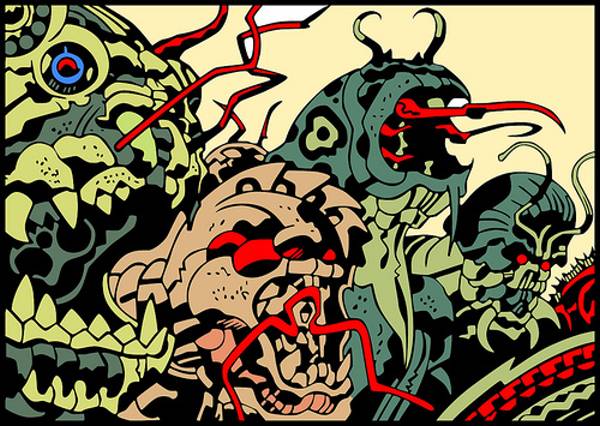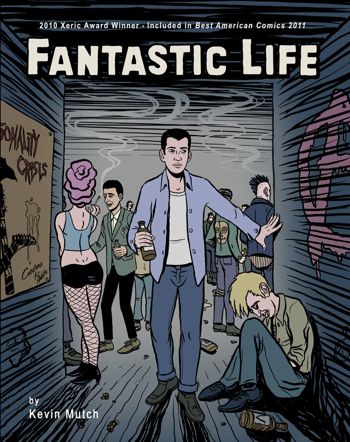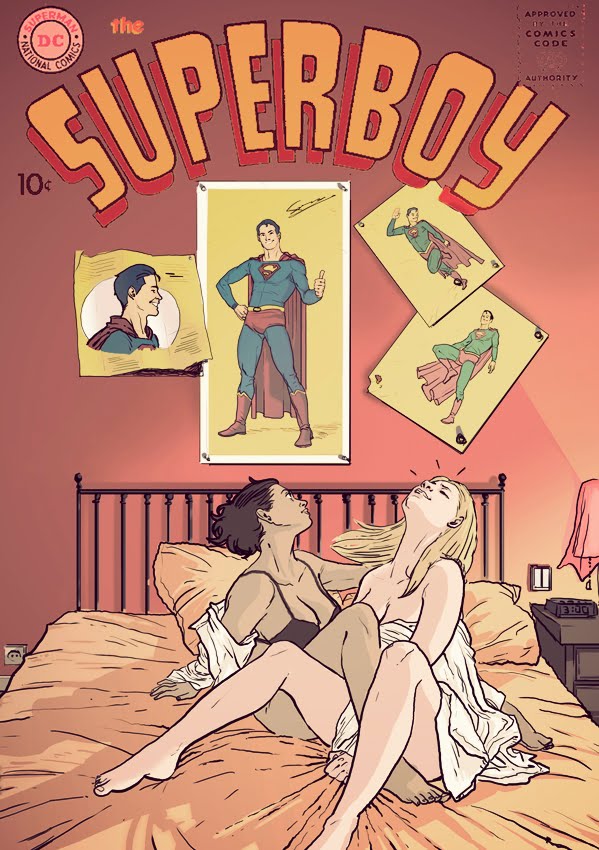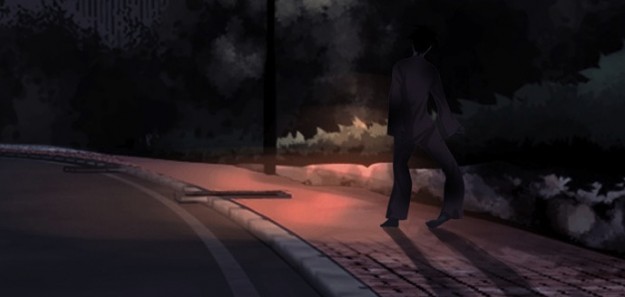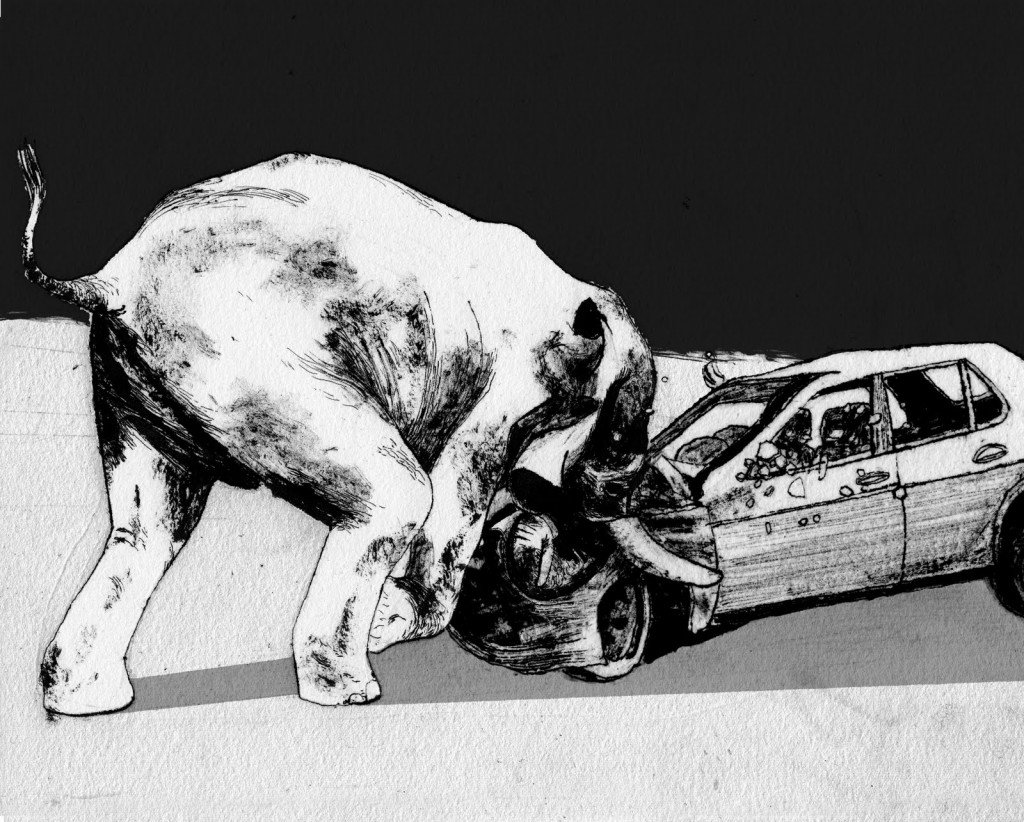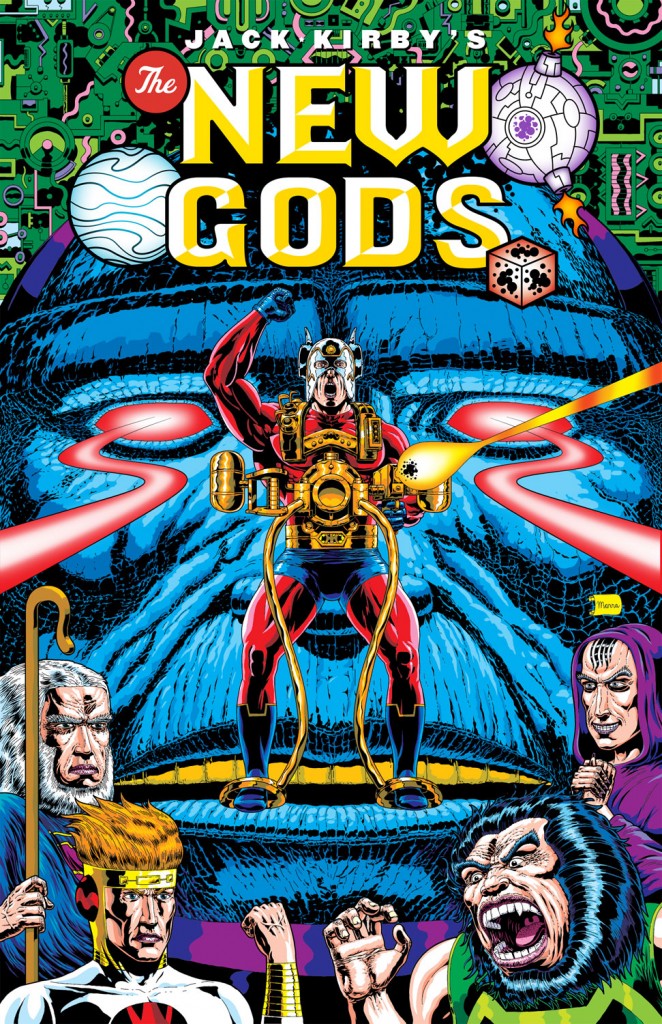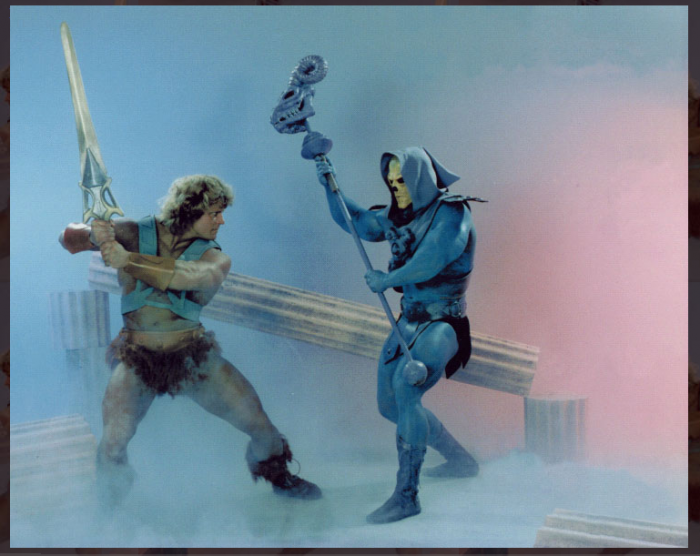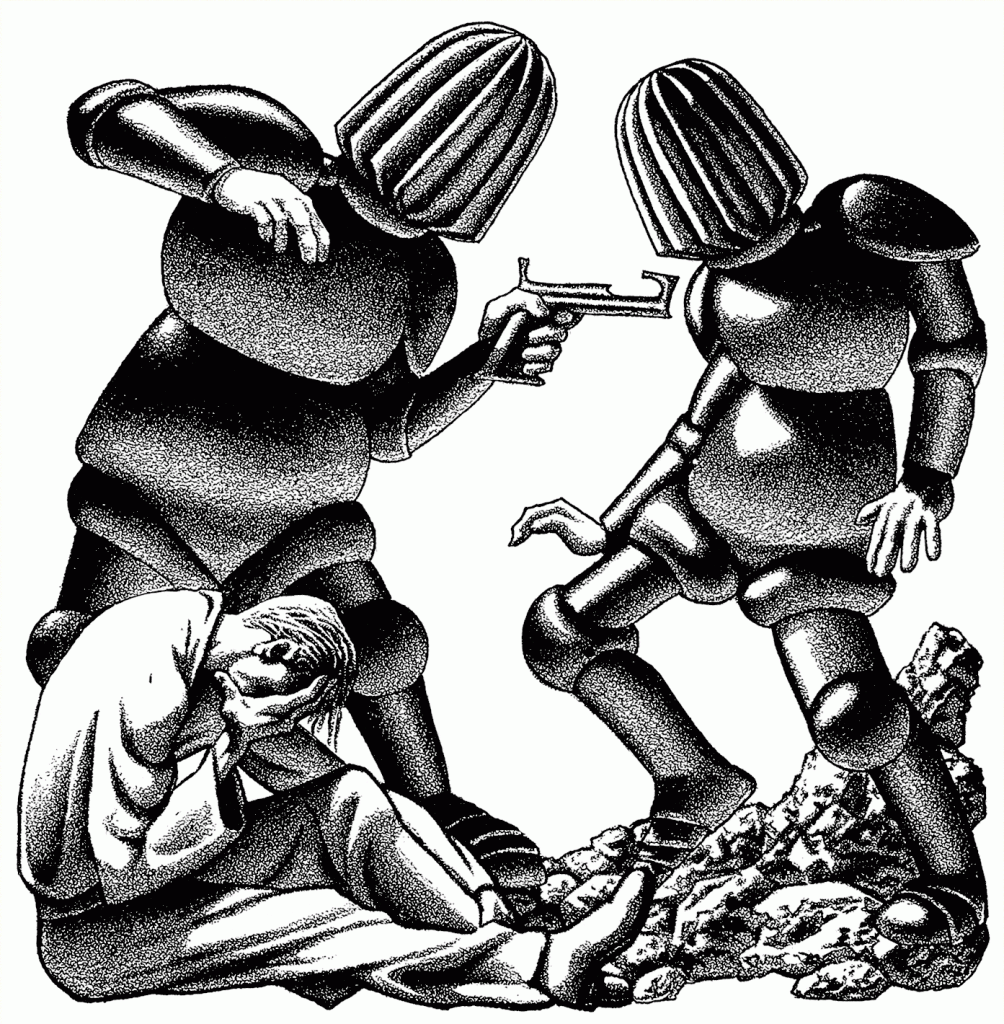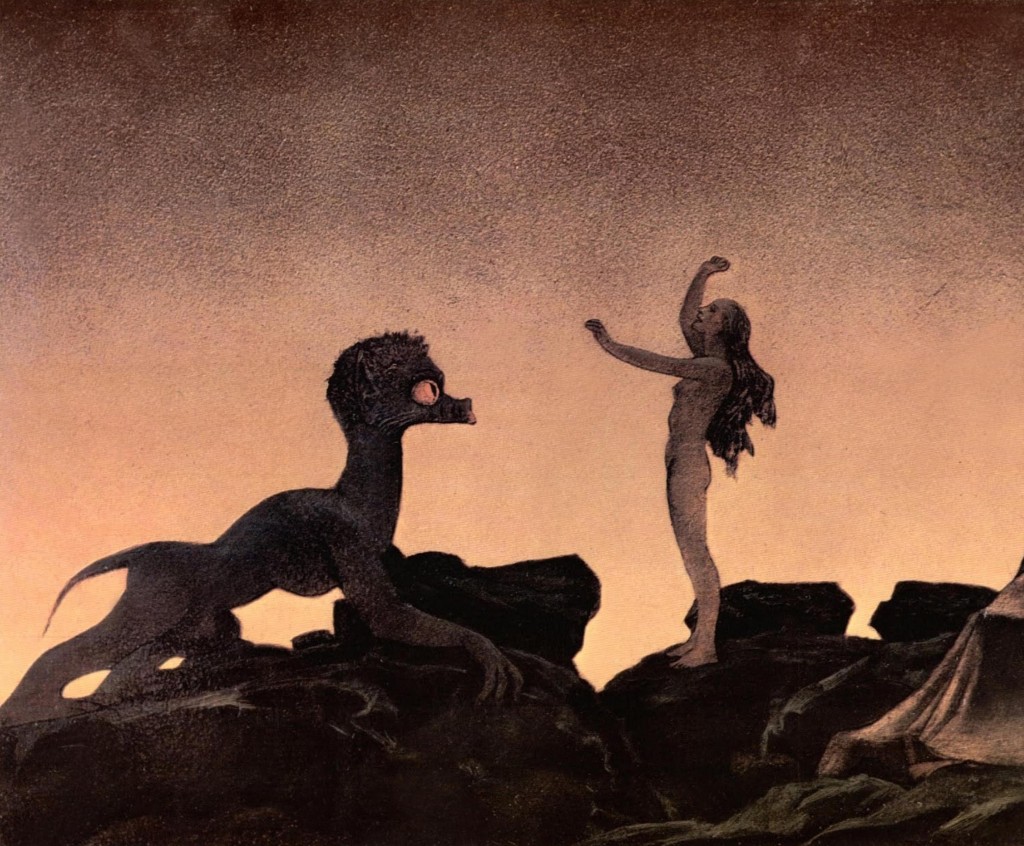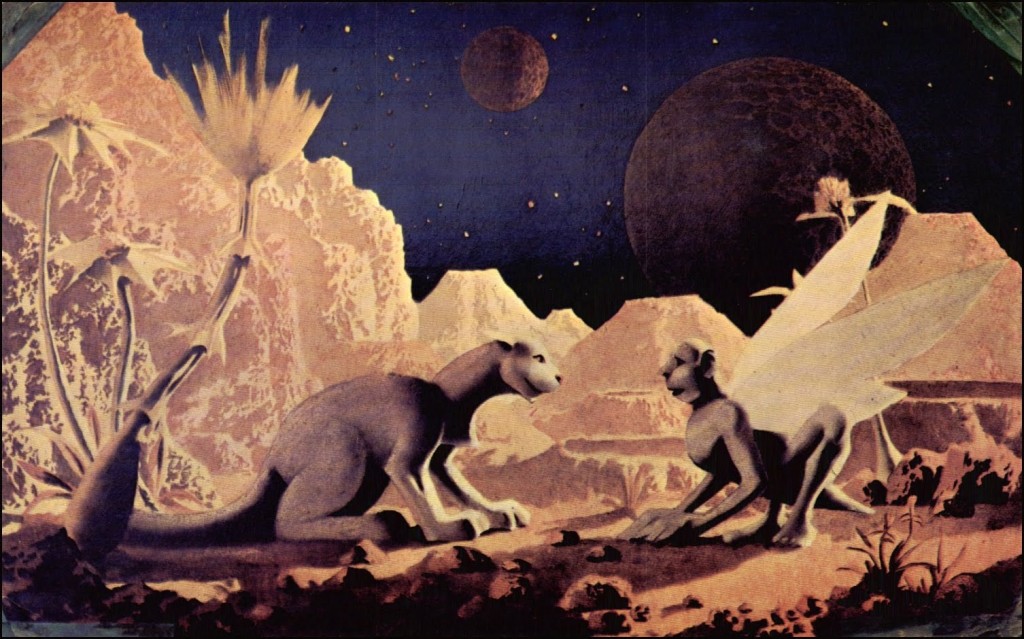Posts Tagged ‘comics’
Carnival of souls: Robot 6 roundup, Crisis crisis, Image goes day-and-date, more
October 4, 2011* Recently on Robot 6:
* Did you know that Michael DeForge launched a webcomic last month? I didn’t, and I even linked to one of the episodes. (Which I wouldn’t have posted in its entirety if I’d realized it wasn’t just an excerpt from some other project. Sorry, Michael!) It’s called Ant Comic and there’s a new installment every other Monday. So far it’s been pretty troubling.
* Brigid Alverson interviews Box Brown on his alternative comic book throwback publishing outfit, Retrofit Comics. It’s the most revealing piece I’ve yet read on Retrofit, with lots of interesting details about how the sausage is getting made. The insight on the relative costs of printing versus shipping is worth the price of admission alone.
* All of DC’s “Crisis” mega-events no longer happened in the new DC Universe. Dan DiDio announced this on Twitter over the weekend a month after the relaunch began, which is how things work when you’ve planned a relaunch since October 2010, I guess? To me, more interesting than the continuity questions this raises is what this means for DC’s view of and future marketing of book collections containing the Crisis comics. When the company last rebooted its decades-long storylines this thoroughly, with Crisis on Infinite Earths 25 years ago, book-format collections were basically a non-factor. Now they’re a huge part of DC’s business, and historically the publisher has been better at packaging and promoting (and heck, just keeping in print) its major books from throughout its history. Obviously all those stories still exist just as you remember them, and one’s enjoyment of them has nothing to do with what’s going on now — but comic fans tend not to see things that way. Now, neither DC nor its retail partners can point to Crisis on Infinite Earths, Identity Crisis, Infinite Crisis, or Final Crisis as books you “need” to read to understand this or that, or as an intro course to the DCU, and future reprints can’t count on that sense of “this happened!” urgency to get themselves over. I wonder what they’ll do with them.
* The move’s also noteworthy given just how big a part of Dan DiDio’s tenure at the company books with the word “Crisis” in the title have been. The Brad Meltzer-written Identity Crisis served as a sort of statement of purpose for the then-new DiDio regime, reintroducing the “Crisis” concept, injecting a kind of troubling degree of sexualized violence into the DCU, and more or less kicking off the new event-comic era. Infinite Crisis was the first full-fledged line-wide crossover either of the Big Two superhero publishers had done in years, and marked the ascent of writer Geoff Johns to the top of the industry. Final Crisis was a somewhat stickier wicket: Grant Morrison’s take on the line-wide event was one of his most divisive books ever, and though it sold well, by the time it wrapped up DiDio was publicly making fun of it during convention panels. Still, it set up Morrison’s well-received and high-selling Batman run of the past several years, especially the storyline involving Bruce Wayne’s “death” and return; since Morrison has basically been allowed to continue writing Batman with his continuity unchanged, who knows what to make of Final Crisis‘s retconning?
* Lisa Hanawalt reviews Drive. Saving this one for later.
* Gahan Wilson says there’s no sexism among the male and female New Yorker cartoonists. That’d be nice!
* Finally for the Robot 6 roundup, I posted a few more thoughts on Emily Carroll’s new webcomic, Dash Shaw & Jesse Moynihan’s old Lost comic, and Benjamin Marra’s new Gangsta Rap Posse issue over there.
* Image Comics is going same-day digital with its monthly comics offerings, through the retailer ComiXology. As Tom Spurgeon put it at the link, “the specter of total Direct Market collapse as soon as comics gained same-day availability has been punched in the face and pushed out of the moving car by DC Comics with their New 52 initiative.” That’s a heck of a phrase-turn, but I think at this early juncture it’s only dispositive in terms of retailer jitters, not the long-term health of brick-and-mortar stores and other print outlets.
* Joe “Jog” McCulloch on the comics of David Lynch, plus various new releases of note.
* Man, that Giorgio Comolo guy sure can draw Kirby characters.
Carnival of souls: Gangsta Rap Posse #2, Emily Carroll, more
October 3, 2011* Good new comics news #1: Benjamin Marra has released Gangsta Rap Posse #2! It looks like this:
* Good new comics news #2: Emily Carroll has started a new webcomic called “Margot’s Room.” The way it works is that you click the objects listed in the text at the top of the landing page to read it.
* Good not really new comics news: Frank Santoro’s interview with Forming author Jesse Moynihan for the Comics Journal contains, in its entirety, the Lost-inspired comic “Spiritual Dad” that Moynihan and Dash Shaw did for The Believer a while back. Just scroll down.
* Did you know Brian Chippendale has a prose science-fiction short story blog?
* Here’s a sentence I’m excited to write: Matt Zoller Seitz interviews Community creator Dan Harmon.
* David Allison (aka Illogical Volume) connects Darkseid to the inescapable gravitational maw of contemporary capitalism as part of The Mindless Ones’ month-long series of essays on bad guys. What I like about this essay is that it makes Darkseid a lot more dangerous an idea than if we regard him as simply a celestial fascist, one of “those guys,” the obviously evil goosesteppers no self-examination is required to oppose. As much as I enjoy Final Crisis, no one was ever likely to come down on the “oppression” side of “freedom vs. oppression.” The original Jack Kirby conception of Darkseid and Anti-Life as war itself, whereby any violent opposition to Darkseid is itself Anti-Life, is a much stickier proposition, as is Illogical Volume’s suggestion of a humanity-devaluing socioeconomic program so pervasive that opposition is all but literally unimaginable. That’s the hallmark of a good dystopia, after all: No chains required.
* The CBLDF puts the Comics Code’s head on a stick and mounts it on the city wall.
* Craig Thompson, Habibi, Arabian Nights, Orientalism.
* The end of the first paragraph in Graeme McMillan’s brutal drubbing of Frank Miller’s Holy Terror may be the most devastating line I’ve ever read in a comics review.
* Another wonderfully weird image/gif gallery from Uno Moralez.

* This is a sculpture of a creature from Stephen Gammell’s Scary Stories to Tell in the Dark illustrations, by Kezeff. It is marvelous.
* Real Life Horror: The President can have Americans killed without charge, trial, or conviction at any point around the globe now, apparently, so that’s pretty fucking exciting.
* Finally, start your October off right with TERROR STAIN, the latest in Chris Ward’s annual series of Halloween mixes.
Comics Time: Prison Pit: Book Three
September 28, 2011Prison Pit: Book Three
Johnny Ryan, writer/artist
Fantagraphics, September 2011
120 pages
$12.99
Buy it from Fantagraphics
Buy it from Amazon.com
For today’s Comics Time review, please visit The Comics Journal.
Carnival of souls: Johnny Ryan, Geoff Grogan, Justice League, more
September 26, 2011* Jesse Pearson’s interview with Johnny Ryan for The Comics Journal is tremendous, by far the most extensive and revealing I’ve ever read with the artist. I feel like it solves the Johnny Ryan mystery. I discuss why over at Robot 6.
* Also at Robot 6: Tim O’Shea talks to Michael Kupperman about Mark Twain’s Autobiography 1910-2010.
* Geoff Grogan has relaunched his website. He’ll be serializing his excellent comics Look Out! Monsters and Fandancer there, as well as reformatting his old comic Dr. Speck and launching some new projects as well.
* Tom Spurgeon on Jaime Hernandez’s Love and Rockets: New Stories #4, Ethan Rilly’s Pope Hats #2, and Jacques Tardi and Jean-Patrick Manchette’s Like a Sniper Lining Up His Shot.
* Looks like Uno Moralez is joining Jack Kirby, Paul Pope, Sergio Aragones, and Stan Sakai in the fraternity of non-autobiographical cartoonists who nonetheless look like they could have stepped out of one of their own comics.
* Man, that’s a lot of airtime to fill with variations on “Well, that wasn’t very good.”
* Ken Parille and Brian Chippendale explain what’s wrong with Justice League #1. That’s the previously deleted Chippendale post on the topic, revived and expanded, by the way. And do stay tuned for a delightful comment thread on Parille’s post. Personally, I think that a last-page reveal/cliffhanger predicated on wondering whether Superman is Batman and Green Lantern’s friend or foe in a series called Justice League with Superman side by side with Batman and Green Lantern in a portrait of the previously announced League line-up on the cover is indicative of the situation here.
* Jonny Negron remains wonderful/keeps my blog NSFW almost singlehandedly.
* If you have not yet been introduced to the joys of Kevin Fanning, allow me.
Comics Time: “Touch Sensitive”
September 23, 2011“Touch Sensitive”
Chris Ware, writer/artist
McSweeney’s, September 2011
14 pages
99¢ (in-app only)
Download the free McSweeney’s iPad app, then purchase it in the app’s store
For today’s Comics Time review, please visit The Comics Journal.
Carnival of souls: Frank Miller, Chris Ware, comment-thread discussions, more
September 22, 2011* Some lovely preview pages from Frank Miller’s Holy Terror are going around. (Via Marc-Oliver Frisch.)
* Chris Ware has a new iPad-only comic out. More about this anon.
* Here’s a nice piece by Zom of the Mindless Ones on the end of Twin Peaks.
* George R.R. Martin on early Marvel superhero comics — what made them different, how they influenced him.
* The comment threads for my recent Habibi and Mad Men posts are proving unusually fecund. Check ’em out and talk about Orientalism, competence fantasies, male beauty, and more!
* And hey, how about that Hellen Jo?
Comics Time: Habibi
September 20, 2011Habibi
Craig Thompson, writer/artist
Pantheon, September 2011
672 pages, hardcover
$35
Buy it from Amazon.com
Fifteen observations about Craig Thompson’s Habibi:
1. This is not a book about Islam. It’s not about any varieties of Islam — contemporary, ancient, fundamentalist, militant, or otherwise. It’s a book infused with Islamic art, culture, thought, and religious beliefs, certainly, but it’s not about Islam. This is another way of saying it’s not about 9/11, al Qaeda, Iraq, Afghanistan, Palestine, Iran, any specific Muslim countries, Muslims in America, uniquely Muslim varieties of misogyny, the Arab Spring, or any other contemporary news-story topic. I first talked to Thompson about his plans for Habibi in the summer of 2003, and in that context and over the course of many of the years to follow it was tough to think about the book without thinking of it one or more of these ways, but no, that’s not what it’s about.
2. This is a book that uses Islam to do other things. On a visual level, it gives Thompson a set of design elements, from calligraphy to ornamentation to architecture to dress to geometrical art, from which he can build a coherent visual world for his vaguely fantastical/post-apocalyptic/dystopian story. Not coincidentally these elements dovetail with his preexisting preoccupations as an artist, from swooping fabrics to obsessive-compulsive design filigrees to religious iconography.
3. It follows that the book is consciously, knowingly Orientalist, as you’d expect and hope of a book that’s using actual Islamic art as bricks in a fantasy world-building project. It’s got an Arabian Nights vibe. Thompson’s invoked Edward Said on this score and everything. To the extent that potentially problematic caricatures of Arab and African race are involved, and they are, they are at least consciously evoked.
4. Islam also provides Thompson with a back door into talking about religion and God — even recognizably Christian elements thereof, thanks to the presence in Islam of Jesus, Solomon, Abraham et al — without needing to rely on the brand of American evangelical Christianity in which he was immersed growing up and which he’s already explored in Blankets. At times the commonality between the issues he discusses in the two books is quite striking. For example, there’s a plotline here about how the bifurcation of Islam and Judaism/Christianity can be traced back to which son you believe Abraham was supposed to sacrifice, Isaac or Ishmael, that’s basically just Blankets‘ bit on scriptural malleability (“The Kingdom of God is within or around you”) blown up to world-historical scale. The impact of religious belief on the development of adolescent sexuality is a centerpiece of both books as well.
5. This is a book about sex. Even if there’s nothing in it that would earn the book anything more than an ‘R’ rating, it works through some violently ambiguous and conflicted feelings about sex in relatively explicit fashion. It took my wife reminding me that Craig first described the book as starring “a eunuch and a prostitute” to help me crystallize that, but there it is. And it makes sense, given the play-it-to-the-balcony tone of Thompson’s previous book, Blankets, and its autobiographical protagonist’s all-or-nothing approach to falling in love and making art, that this book would coalesce around those two poles as well. It is very frankly about the liberating and destructive power of both desire and the denial of desire. (To hearken back to the Arabian Nights element, here’s a tell: Instead of delighting the king with her stories for night after night under penalty of death, the central female character must delight him with sex.)
6. This is a book about many other issues that overlap with or orbit around sex in the popular imagination. They’re not sex, but they’re talked about in the same breath more often than not. They include rape, molestation, prostitution, pregnancy and childbirth, gender, misogyny, a panoply of queer identities, self-injury, puberty, motherhood, male-female friendships, sex and race, sex and organized religion, sex and spirituality, sacrifying sex/orientation/gender, masculinity and femininity…
7. The emotional and physical stakes for the characters are much higher than they are in any of Thompson’s previous works. This is established within the first few pages, in which a child is raped. A bloody sheet is held up to the child and the audience, the blood of her vagina on the blank white fabric equated with the letter-writing in Chunky Rice; the footprints on snow and drawings on paper of Blankets; the act of Creation itself — “From the Divine Pen fell the first drop of ink.” Violence and abuse are the lifeblood of the story.
8. Thompson’s art is much, much denser here than I’ve ever seen it before. It’s still lush and lovely on a surface level, his line still swoops and curves in a fashion he’s explicitly compared to handwriting, but there are more panels on the page, more black in the panels, few of the vast fields of white Blankets was known for, and few of its splash pages too. Decorative patterns of intricate detail are copied from Islamic texts by hand, and drawn repeatedly until they cover almost all the available space on a given page, also by hand. It’s a much tougher book for your eyes to breeze through.
9. Maybe the best way to symbolize that is in the new panorama Thompson has added to his repertoire. He’s said, and promotional art for the book has made use of the fact, that Good-Bye, Chunky Rice had the ocean, Blankets had the snow, and Habibi has the desert. That’s true, but Habibi heavily features vistas of another sprawling, enveloping sea: a man-made sea of garbage. It’s as dense and detailed and chaotic as the water, snow, and sand are unified and simplified.
10. The book is designed. Designed in the Watchmen symmetrical-issue sense. Each of its nine chapters corresponds to a box in the Islamic religious/mathematical talisman known as a magic square — a sort of spiritual sudoku — and its corresponding letter of the alphabet. Each corresponds to a specific topic, and a specific prophet of Islam used to illuminate that topic. But unlike Alan Moore, Thompson doesn’t foreground his machinations. This stuff is present, but in its way it’s beside the point. I didn’t even notice.
11. In much the same way that light, electricity, and information functioned as the stuff of life in Grant Morrison’s Final Crisis, fluid is the stuff of life here. Water is crucial to the various societal strata’s survival within the drought-stricken world of the story. Blood is crucial to nearly all of the book’s depictions of both sex and violence, the fuel of human physicality. Ink is crucial to the characters’ understanding of the nature of God and the world via holy texts and art, and to the author’s understanding of what the hell he’s been doing for the past eight years. There’s less semen or vaginal secretion than you’d think, but otherwise it’s a book about fluids, and fluidity. The greatest sin is staunching the flow, which is done in various ways — a metaphor that extends from environmentalism to art to, of course, spirituality and sexuality.
12. The relative lack of emphasis on sexual fluids is a leading indicator of where the book ultimately pulls an important punch. There’s a revelation, an exposure, toward the end of the book that we readers do not get to see. Since the book confronted virtually everything else it tackled so head-on, since it was so in-your-face about violence and sexuality, you really feel this revelation’s visual absence. Which is maybe appropriate, given what’s being revealed, I dunno. But it left me wondering “Why didn’t he show that?”, in a way that suggests it’s a misstep.
13. The book contains two of the toughest depictions of mental illness I’ve come across in comics. One in particular involved postpartum depression and was deeply sad to me. The other comes hot on the heels of the book’s single most unpleasant depiction of the cruel fate of children in this world. Actually, nearly everything involving children is rough stuff here. There’s not a lot of time for innocence.
14. The book contains two pretty rollicking action sequences. If you’ve read as many lousy action comics as I have, it ought to be a pretty great pleasure for you to watch an artist with Thompson’s attention to environment, layout, movement, and pacing choreograph chase scenes and fight scenes. It definitely was for me. And these sequences had the secondary function of release valve for the dense and emotionally oppressive material they helped break up.
15. Actually, the more I think about it, the more I think Habibi is a book of sequences. Maybe this is reinforced by Thompson’s non-linear storytelling, with his male and female leads’ stories shifting backward and forward in time independent of one another, a technique that emphasizes discreet sequences over the overall flow of the larger narrative. But the bathtub sequence (very successful), the dam sequence (this is perhaps the book’s climax, and I’m not sure it’s successful), the garbage man sequence, the childbirth sequence, the eunuchs sequence, the conflicting stories of Abraham’s aborted sacrifice — these are what stick out to me, embedded in the bigger picture. They’re what will draw me back into the book, moving backward and forward through the work of a cartoonist working out his personal obsessions on the grandest canvas imaginable.
Carnival of souls: Star Wars, Netflix, more
September 20, 2011* Rob Bricken explains why you may or may not want to buy the Star Wars blu-ray box set. He’s on the fence, but his comprehensive assessment of all the set’s features, pro and con, ought to give you enough information to make up your mind. For me it’s a clear no. I don’t begrudge George Lucas the opportunity to endlessly tinker with the world he created. The guy built an entire industry with his imagination, and owns the rights to all of it, a fate that has eluded almost all of his antecedents and very few of his descendants. I’d guess that getting to constantly refine and mess with what you’ve built has got to be unimaginably delightful. But speaking personally, I’m not interested in seeing the tinkering — I’m interested in seeing the versions of the films that made me like them in the first place. I’m certainly not interested in rewarding a series of decisions/revisions/additions/subtractions that have made them worse films.
* While we’re on the subject of customer-independent film-industry business decisions, I find yesterday’s letter of apology cum backdoor announcement of a major overhaul of his entire company from Netflix CEO Reed Hastings maybe the most uniquely bizarre such move I’ve ever seen. People like Endgadget’s Darren Murph and Slate’s Farhad Manjoo are probably right about the underlying strategy: a sort of preemptive amputation of the company’s beloved DVD direct-mail business model, prepping for its eventual destruction on the company’s terms rather than dealing with it over a prolonged period on the market’s terms. In this light, everything that looks stupid or awful about the announcement is a feature, not a bug: Using an attempt to staunch customer-base and stock bleeding caused by the company’s last poorly handled major change as an opportunity to announce an even more complicated and infuriating business model; slapping the newly spun-off DVD business with a ridiculous name, Qwikster, that sounds like a failed Internet startup from ten years ago; spending a significant chunk of time explaining how much more user-unfriendly the new set-up will be; maintaining a sad-sack hostage-tape demeanor throughout the entire affair. But to me this only makes sense if all the damage were completely contained within the customer base for the red-enveloped stepchild DVD business, and it obviously isn’t. The Netflix-proper streaming customers got this letter and marveled at its lugubriousness, prolixity, and lack of understanding of what “apology” means along with everyone else. Maybe some next-level business mind can explain to me why deliberately making yourself look bad and your company less useful for nearly all of your customers, publicly, twice in a row, is actually four-dimensional-chess checkmate, but I don’t see it. I can tell you that the only thing that stopped me from cancelling my Netflix/Qwikster account yesterday is feeling like I need to get a return on my investment in having rented the same two unwatched Mad Men discs for the duration of my wife’s pregnancy and our child’s subsequent first six months of life.
* Here’s a photo of Tom Neely, Lisa Hanawalt, Johnny Ryan, and Benjamin Marra from the SPX panel I hosted, “Excruciating Detail: Drawing the Grotesque.” They seem to have enjoyed it, which is nice. Both this and the Craig Thompson Habibi panel I moderated were filmed, so I’m hoping I’ll be able to link to the video soon.
* Frank Santoro will teach you comics by mail.
* S.H.O.O.T. First writer Justin Aclin once pointed out to me that the comics equivalent of Seinfeld‘s white-hot contempt for the elderly is Axe Cop‘s naked loathing of babies. In that light, the current Axe Cop storyline is the equivalent of any episode centered on Del Boca Vista or the Costanzas.
* Tom Spurgeon’s review of The Intrepids #6, a comic I haven’t read, also functions as a review of, really, the vast majority of superhero and superhero-ish comics today, many of which I have read. “Ruthlessly familiar” is just about right.
* This Adrian Tomine print is really really hot stuff. Sexiness has always been one of his comics’ secret weapons.
* Check out the colors in this Michael DeForge comic.
* Dave Kiersh keeps posting his old comics and art, which keep being one of the great hidden treasures in all of comics.
* Hans Rickheit made Cochlea and Eustacea puppets, which aren’t at all disturbing.
* Alisa Kiss as Red Sonja, photographed at Dragon*Con by Anna Fischer. “I just want you boys to see what you’re fighting for, that’s all.”
* It’s awful that anyone can have the last word on Dylan Williams, but if it has to be that way, let it be Tom Spurgeon.
Carnival of souls: L. Nichols, Dylan Williams, SPX, more
September 16, 2011* My latest Say Hello! column is up at The Comics Journal. This time I interviewed Jumbly Junkery‘s L. Nichols.
* I’ve collected some powerful tributes to Dylan Williams over at Robot 6.
* I’m pretty bummed that I missed out on getting David Bowie sketches from Craig Thompson and Chester Brown at SPX this past weekend, so you can bet your ass I’m camping out days in advance to get ’em from next year’s guests of honor, Chris Ware and Dan Clowes. The show’s expanding its floorspace next year, which is a good thing — with those two there, they’ll need it.
* Chris Mautner reports on his haul of comics from the show. I too was pleased to see a new Kevin Huizenga minicomic. Speaking frankly, I didn’t feel a lot of energy from that segment of the comics at the show. Most of the stuff I was excited to read, from Big Questions and Habibi to Forming and Pure Pajamas, came from the established publishers. Meanwhile, reliable makers of really good minis like the Closed Caption Comics and Partyka collectives were MIA, and I didn’t really make any discoveries that made up for their absence. It was the one flaw of an otherwise very successful show, I thought.
* Kevin Czapiewski’s con report was an uplifting read. SPX has a well-deserved reputation for being a fun show to hang out with your fellow comics people, but Kevin argues persuasively that this provides not just a pleasant weekend, but a form of creative/spiritual sustenance.
* The Descent director Neil Marshall is directing the pivotal “Blackwater” episode of Game of Thrones Season Two, from a teleplay by George R.R. Martin himself. That’s pretty damn exciting.
* Why did Gabrielle Bell take down her daily diary comics from July?
* Ron Regé Jr. is raising money to help support himself as he completes his next book, Fantagraphics’ The Cartoon Utopia. That’s a gorgeous…cover? Promo image? Gorgeous regardless.
* Lisa Hanawalt has a strange imagination.
* BREAKING: I love Jonny Negron.
Comics Time: The League of Extraordinary Gentlemen: Century: 1969
September 14, 2011The League of Extraordinary Gentlemen Vol. 3: Century #2: 1969
Alan Moore, writer
Kevin O’Neill, artist
Top Shelf, August 2011
80 pages
$9.95
Buy it from Top Shelf
Buy it from Amazon.com
For today’s Comics Time review, please visit The Comics Journal.
Carnival of souls: Dylan Williams benefit auctions, more
September 12, 2011* The Divine Invasion is the website put together to auction off art and comics to help pay for Dylan Williams’s cancer treatments, and it’s quite striking. It’s moving to see what a wide range of comic book people have contributed, from Periscope to PictureBox, from Matt Fraction to Michael DeForge. That money is still needed, so please bid if you see something you like.
* Here are your Ignatz Award winners.
* Top Shelf’s holding its annual $3 Sale as we speak. At the link you’ll find my recommendations for how to spend your money. Kolbeinn Karlsson’s The Troll King for $3 is basically the deal of the year.
* Tom Devlin spotlights Pure Pajamas, the new collection of comics from Marc Bell. Marc Bell comics are by far the best Marc Bell anythings, so I’m excited to read this. Tom reports that Bell may be working on a graphic novel for Spring 2013, too.
* Kiel Phegley interviews Jaime Hernandez in video form.
* Highly relevant to my interests: The Descent/Doomsday director Neil Marshall will be directing an episode of Game of Thrones Season Two. Oh, indeed.
* Brian Chippendale reviews Justice League #1, Animal Man #1, and New Avengers Annual #1 as only he can. UPDATE: Brian says the post wasn’t finished and went up accidentally; expect a reboot sometime next week.
* Scott Tobias’s New Cult Canon column on Edgar Wright’s Shaun of the Dead for the Onion AV Club is good, but the best part is this line about what Wright and Pegg do: “If you ever wonder what’s missing from a Kevin Smith film, watch one of theirs.”
* God, I love it when Dave Kiersh posts his old comics.
* I’m excited to (one day, probably years from now at this rate) see David Cronenberg’s A Dangerous Method. Kiera Knightley looks older and somewhat fleshier and kind of tired in this promotional picture, which as it turns out is a very good look for her.
Dylan Williams
September 12, 2011Dylan Williams, the publisher of Sparkplug Comic Books, has died of cancer. He was 39.
I didn’t know Dylan like many of the people offering heartfelt tributes did. I knew him to say hello, and we exchanged emails about Sparkplug’s releases from time to time. But I didn’t need to know him to be stunned by this news and to mourn this loss.
Only recently, as Sparkplug has published more work and I’ve read more of it, did I realize how valuable that publisher is to alternative comics, and how singular a role it plays. The visual style of most of the Sparkplug releases I’ve seen is demanding of the audience, and not in any kind of fashionable way that could help get them over. And the intelligence of the writing behind them, even the ones that didn’t necessarily click with me, is really incandescent; more thought and effort has gone into it than might instantly be reciprocated or rewarded by the reading and buying public.
Simply put, I don’t think a home for many of these creators and comics would have existed anywhere if Dylan Williams hadn’t created it. That’s not something I would say about very many other publishers today, even publishers I really love. Sparkplug is one of a kind, and it’s no great leap to suggest that the man behind Sparkplug must have been one of a kind as well.
Chris Mautner has an obituary. Tom Spurgeon has an authoritative list of links. Austin English, Levon Jihanian, Minty Lewis, John Hankiewicz, and Brett Warnock offer moving testimonials to their colleague and friend.
A reminder: STC at SPX
September 9, 2011I will be attending the Small Press Expo in Bethesda, Maryland tomorrow. If you’re there, please say hello to me, as neither my wife nor baby nor friends ended up being able to come with me and I will be utterly alone. I’ll be wearing a red t-shirt featuring Tonantzin and Vicente from Love and Rockets, most likely pestering Marc Bell and Chester Brown for David Bowie sketches. I will talk to you about A Song of Ice and Fire for minutes on end at your request.
I’ll also be hosting a couple of spiffy panels that I hope you’ll attend.
Excruciating Detail: Drawing the Grotesque
1:00 pm | White Flint Amphitheater
Historical comics ranging from Chester Gould’s Dick Tracy to the horror comics of the 1950s have specialized in images of the grotesque. Sean T. Collins will speak with cartoonists Lisa Hanawalt (I Want You), Benjamin Marra (Night Business), Tom Neely (The Wolf), and Johnny Ryan (Prison Pit) about the act of drawing horrific, visceral, visual detail in contemporary comics that speak to horrors that are both timeless and contemporary.
Craig Thompson Q+A
3:00 pm | White Flint Amphitheater
Following on the heels of his sensitive tale of departure Good-bye Chunky Rice, Craig Thompson came to national attention in 2003 with his massive, autobiographically-based graphic novel Blankets. Eight years later, Thompson has completed his next graphic novel, Habibi, a love story set in the Middle East and patterned after the visual cadences of Arabic calligraphy and Islamic art. Thompson will discuss his work in a conversation with Sean T. Collins.
Carnival of souls: Special “Lots of publishing news from lots of people” edition
September 7, 2011* Drawn & Quarterly is debuting Adrian Tomine’s new Optic Nerve issue at SPX. It’s weird to me to think that there’s only 12 issues of that series, and that many of them came out in the ten years or so I’ve been following comics, because Tomine’s one of those guys I’d heard of forever. But he started hella young.
* ADDXSTC fave Jonny Negron is part of a new anthology series called Chameleon, debuting at October’s Alternative Press Expo.
* Speaking of Negron, and when aren’t we around here:
* And speaking of ADDXSTC faves, Uno Moralez has posted another of his nothing-else-out-there-like-’em image/gif galleries.

* AdHouse will be publishing American Barbarian, the Kirby-meets-’80s-B-movie-apocalypse action comic from Tom Scioli. It’s AdHouse, so you know the book’s going to be a thing of beauty.
* The good news: Taiyo Matsumoto’s No. 5 is now available to read in English on your iPad. The bad news: Said English was typeset in Comic Sans, apparently.
* Here’s a fine Douglas Wolk review of Anders Nilsen’s masterful Big Questions for the New York Times.
* Tucker Stone has begun a series of posts on Darko Macan and Igor Kordey’s Cable/Soldier X, one of my favorite superhero comics and one of the few uncollected treasures of the past decade or so of superhero comics.
* Saving this for when I can savor it: Inkstuds’ Robin McConnell interviews Craig Thompson about his staggeringly ambitious new graphic novel Habibi. I’ll be speaking to Craig about it in his spotlight panel at SPX this weekend, by the way. See you there?
* One of the many nice things about having Tom Spurgeon back in action is that he can do lengthy, gem-packed industry analysis pieces like this one on the DC Comics relaunch. You can chew on this sucker all afternoon.
* I’m also with Tom that publishers should release better sales figures than they currently do, which is to say they should release sales figures at all. The funny thing is that when confronted with the sales analyses that folks like ICv2 and John Jackson Miller and Marc-Oliver Frisch and Paul O’Brien put together, oftentimes publisher representatives will dismiss them and the conclusions drawn from them by saying those numbers aren’t nearly accurate and don’t provide the whole picture. Well, there’s a solution to that problem, and it ain’t “don’t talk about the numbers unless it’s to echo vague sellout announcements we make.”
* Finally, Tom rounds up publisher and creator reactions to the apparently imminent closure of Atlanta’s Criminal Records, an independent record store and alt-friendly comics shop of long standing, of the sort that was integral to the formation and self-conception of “alternative comics” back in the ’90s. Aside from being sad about the cost to the store’s employees, and to the labels and publishers and artists for whom it was a great partner, I’m also sad about the death of that scene. I feel like when I look around lately I see a lot of the energy that used to go into alternative comics as made by one-time Criminal Records visitors like Dan Clowes, Pete Bagge, and Los Bros Hernandez diverted into an alternate comics universe where Heavy Metal‘s influence is stronger than RAW‘s. But that’s probably got as much to do with where I’m looking as anything else.
* Ta-Nehisi Coates’s long war against the bullshit notion of black Confederate soldiers rages on.
* This list of good and lousy cartoon-only He-Man/She-Ra/Masters of the Universe characters reminds me that that toy line and cartoon did more weird things before breakfast than most toy lines and cartoons did all day. This is an absolutely killer killer-robot design, by the way.
Carnival of souls: Special “post-outage” edition
August 31, 2011* I wrote a well-received post on feminism and A Song of Ice and Fire over on my ASoIaF tumblr, in response to this pretty bad piece by Sady Doyle and this very good one by Alyssa Rosenberg. Spoilers abound at all three, so be careful. Related, and less spoilery: my big problem with the way the non-Western cultures in A Song of Ice and Fire are portrayed.
* Jeez, the hits just keep on coming in the comics world: The Center for Cartoon Studies’ library was flooded during Hurricane Irene. The books are basically okay, but the building’s screwed.
* On the Sparkplug/Dylan Williams front, Chris Mautner recommends six Sparkplug books you should consider purchasing to a) help out, and b) read great comics.
* And in happier news, this is a terrific idea: The Library of Congress is creating the Small Press Expo Collection, which will permanently archive all of the Ignatz Award nominees and select self-published books and minicomics.
* And if you enjoy alternative comics in the slightest, Rob Clough’s Top 50 Comics of 2010 is well worth your time. You’ll find a lot of the usual suspects on here, and he and I have a lot of overlap, but he orders things in an idiosyncratic way that will make you think about what you liked best and why.
* George Lucas added a bunch more nonsense–and I mean that, it’s nonsense, it’s stuff that it doesn’t really make sense to add–to the Blu-Ray editions of the original Star Wars trilogy. I’m in broad agreement with what Rob Bricken says about this at the link. It’s perfectly fine for George Lucas to do whatever he likes with his movies. He doesn’t owe me anything. It would just be nice if I could own a nice hi-def copy of the movies I loved growing up as they existed when I was growing up.
* Brigid Alverson put together a highlight reel from a recent Dan DiDio/Jim Lee interview about the rebooted DC Universe and its concurrent digital-comics initiative.
* Jeez, Sam Humphries sure knows what he’s doing.
* Zak Smith/Sabbath on what Rem Koolhaas can tell us about Dungeons & Dragons. (Now that’s a tough sentence to top.)
* William Monahan, the guy who adapted The Departed is doing a draft of Frank Miller’s Sin City 2 script. Sure, I’ll eat it.
* Here’s the cover and creator line-up for Thickness #2, the latest issue of Michael DeForge and Ryan Sands’s alt/art smut comics anthology series.
* Both Rolling Stone’s Matthew Perpetua and Pitchfork’s Tom Breihan interviewed the Rapture’s Luke Jenner about his band’s comeback album, and he comes across like a mensch in both. He’s quite candid about why former co-frontman Mattie Safer left the band following his own return to it after he himself quit a few years back, but Safer emerges as a sympathetic figure too. He thought he was now the undisputed leader of the band, and then that was taken away from him. You can easily see how that would weigh on a guy.
* Jonny Negron is a talented person.
* This is what Ben Katchor used to draw like!
* Now and forever the King. (Additional thoughts.)
(A quick programming note: Though a hurricane-related internet outage appears to have resolved itself as mysteriously as it started (on Monday morning, well after the winds from a hurricane during which we never lost power or cable had died down), I’m still having some unrelated computer problems, as well as spending a lot of time writing for other outlets. So if you don’t see me here as often, that’s why.)
Comics Time: Fantastic Life
August 26, 2011Fantastic Life
Kevin Mutch, writer/artist
Self-published, August 2011
128 pages
No price listed
Read the first chapter at Kevin Mutch’s website
For today’s Comics Time review, please visit The Comics Journal.
Carnival of souls: Special “Support Dylan Williams and Sparkplug Comic Books” edition
August 25, 2011* Publisher Dylan Williams of Sparkplug Comic Books is battling cancer without medical insurance. Please help him out in the best possible way: Buy some Sparkplug comics. I posted some recommendations at Robot 6, along with some thoughts about just how unique and valuable a publisher Sparkplug really is. Meanwhile, Floating World is holding a two-day benefit sale, if you live in Portland and/or are a Phillip K. Dick fan (explanation at the link).
* What a horrifying story: Syrian security forces abducted, beat, and broke the hands of political cartoonist Ali Ferzat before dumping him on the side of the road. The mafia-like cruelty and chutzpah of Bashar al-Assad and his underlings on display in this attack really takes the breath away. I wonder if this is a case the Comic Book Legal Defense Fund can help out with in some way.
* Bummer: The great film scholar Kristin Thompson won’t be writing the Hobbit-centric sequel she’d planned to The Frodo Franchise, her book about the multimedia business of turning The Lord of the Rings from a book to a movie to a cross-platform empire. She’s also shuttering her ongoing blog on the subject.
* John Porcellino on the things he learned from redrawing one page of the Kirby/Lee Fantastic Four.
* Jason Adams on Trollhunter, which seems like a hoot and a half. After the unrelenting stream of insectoid aliens, J-horror knockoffs, and corroded/decrepit slasher/torture baddies, it’s just such a pleasure to see a monster that looks different from all of the other monsters.
* It’s like Nick Gazin reached into my head and pulled out the exact words I’d have used to describe the Smurfs movie.
* Guy Perez’s cover version of Al Plastino’s Superboy #6 cover is my favorite Covered contribution in a long time.
* I hereby invite you to read “Bongcheon-Dong Ghost” by Horang, one of the scariest webcomcs I’ve come across in a while. Leave your speakers on. More about the comic at Robot 6.
Carnival of souls: Ignatz Awards, Atomic Comics, Jerry Leiber, more
August 22, 2011* Sammy Harkham, Edie Fake, and Michael DeForge lead a strong slate of Ignatz Award nominees this year. Who knows — maybe the voters will throw the obviously undeserving Chris Ware a pity win.
* Here’s the latest in a series of dispiriting interviews with the gifted superhero comics writer Grant Morrison. It’s related to this Rolling Stone profile, which in turn is accompanied by this quite good “best of Grant Morrison” list by Matthew Perpetua.
* The large Arizona comics retail chain Atomic Comics has abruptly gone out of business, with owner Mike Malve filing for bankruptcy. Comics people I talked to about this today were pretty freaked out.
* In a rare return to his home turf Jog the Blog, Joe McCulloch presents a short bit of (also rare lately) writing on art comics, among other things, with his Top Ten Comics list.
* Tucker Stone really liked Ryan Cecil Smith’s SF #1. I liked it too.
* Secret Acres’ Barry and Leon present their PACC con report. They also note that Dylan Williams of the very valuable comics publisher Sparkplug is ill, which I’m sad to hear. Get well, Dylan!
* Wow: Tom Neely is working on one of Matt Maxwell’s Western-horror Strangeways comics.
* Here’s a neat-looking project from Split Lip writer and nascent-horror-blogosphere veteran Sam Costello and artist Neal Von Flue: Labor and Love, a collection of four comics adaptations of American folk ballads. It debuts at SPX.
* Zak Smith on the most disturbing room in D&D.
* Matt Rota draws the Republican Party in action for the New York Times.
* Jerry Leiber, half of the Leiber/Stoller songwriting team, has died. What a monstrous talent.
Carnival of souls: Jim Hanley’s, Jim Henley, Beck Hansen, Hannes Bok, more
August 17, 2011* Jim Hanley’s Universe is the best comic shop I’ve ever been to. Ten years ago, my adult life in comics began there, when I paid a visit to pick up Grant Morrison and Frank Quitely’s New X-Men on a whim. It’s been my “local comic shop” for most of the rest of the decade. So I was stunned and sadden to hear that Hanley’s Staten Island branch was all but swept away by flooding this past weekend. All that they’re asking in terms of help is that you drop by either branch and buy something, so today I stopped in and picked up Jesse Moynihan’s Forming Vol. 1 from Nowbrow and Alan Moore & Kevin O’Neill’s The League of Extraordinary Gentlemen Vol. 3: Century #2—1969 from Top Shelf. Spending forty bucks on comics has rarely felt so good. If you’re in the city, please support this wonderful store.
* If you care about Beck or what used to be called alternative music at all, you definitely want to read Ryan Dombral’s career-spanning interview with Beck at Pitchfork. What a thoughtful, honest guy he seems like. I was heartbroken to read that he lost two years’ worth of Sea Change-style music — 35 songs in all — when he misplaced a suitcase full of recordings prior to shifting gears and recording Guero with leftover ideas from the Dust Brothers, but even more horrifying is that apparently he’s never heard anyone talk nicely about his masterpiece, Midnite Vultures, and thus is sitting on 25 songs recorded in the same period. This is a travesty. From now on, if you see Beck, tell him you loved Midnite Vultures.
* Clive Barker has a prose essay collection out? Or coming out soon? Called The Painter, the Creature, and the Father of Lies? Nice.
* Say, did I mention that ADDXSTC-fave bloggers Jim Henley and Bruce Baugh have a new RPG blog called 20 X 20 Room? Probably not, since despite one or the other of them telling me so, I only really realized it yesterday. Well, now you know. They’re two of the smartest and most humanistic writers on gaming and genre art around, and you’d be hard pressed to find two bloggers more influential on my non-blogging life than they.
* John Porcellino presents his personal Top Ten Comics. It’s a pleasure to hear the great cartoonist talk about some of the other great cartoonists (Clowes and Kirby get two books apiece), as well as some off-the-beaten-path choices.
* Kevin Czap of Comix Cube reports from the Philadelphia Alternative Comics Convention, a well-regarded newcomer on the regional alt/art show scene. I don’t think there’s any reason why every city with a decent-sized number of alternative cartoonists can’t put together something like this, even if the result doesn’t end up with the high profile of a BCGF or Stumptown or TCAF or whatever.
* Benjamin Marra crushes the competition with this New Gods tribute. Omega Effect annihilation. MARRA IS!
* Speaking of Ben, who I remind you I’ll bless him for digging this up. It’s like He-Man and Skeletor are fighting in the middle of an issue of Cold Heat.
* I don’t know who Steingrim Veum is, but he sure can draw orgies. This is wonderful stuff. (Via Tom Spurgeon.)
* Aeron Alfrey has put together another astonishing art gallery for his site Monster Brains, this time starring pulp cover artist Hannes Bok. In addition to stippling that’d make Drew Friedman jealous, Bok makes his otherworld creatures and scenes truly otherworldly. If there’s one thing we’ve lost from decades of seeing monsters come to life on movie screens — and don’t get me wrong, I treasure a lot of those monsters — it’s their uncanniness. It’s very very rare to see a monster that makes you feel like you’ve endangered yourself simply by seeing it.
Have a Comics Time all the time
August 16, 2011I’m pleased to announce that the Comics Reviews section of the sidebar is now fully up to date. All of my recent Comics Time reviews have been added, and all the links lead to the relevant review here at seantcollins.com rather than at my old site. That’s in the neighborhood of 500 reviews. Please browse and enjoy.


